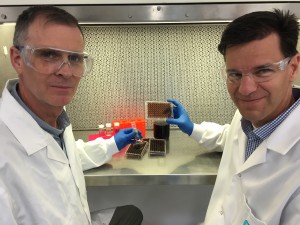CSIRO scientists have developed a new coating material from a primordial goo – known as prebiotic compound – which is considered to have been “home to the building blocks of life”.

Image credit: CSIRO
According to CSIRO, the new coating material could be used to improve medical devices and implants and assist with the medical treatments of thousands of Australians that receive medical implants like bone replacements, catheters and pacemakers every year.
Lead researcher Dr Richard Evans said that his team discovered that the molecules from this prebiotic compound allow for a bio-friendly coating of implants, enabling body cells to readily grow and colonise it.
He said the compound could be applied to medical devices to improve their performance and acceptance by the body in a range of medical procedures.
“The human body is a complex system so there is a lot to consider when implanting artificial parts. Reducing the likelihood of infection and ensuring the body doesn’t reject implants are ongoing medical challenges,” Dr Evans said.

“That’s why coatings on these implants are needed to help them to do their job. We wanted to use these prehistoric molecules, which are believed to have been the source of all life evolving on Earth, to see if we could apply the chemistry in a practical way. The non-toxic coating is adhesive and will coat almost any material making its potential biomedical applications really broad.”
The team of researchers also experimented with adding silver compound to produce an antibacterial coating that can be used on medical devices such as catheters to avoid infections.
“Other compounds can also be added to implants to reduce friction, make them more durable and resistant to wear,” Dr Evans said.
The new coating process is fairly simple and uses substances that are readily available, which means that biomedical manufacturers can produce improved results with fewer resources compared to existing techniques.
“This research opens the door to a host of new biomedical possibilities that are still yet to be explored,” Dr Evans said, adding that the CSIRO was seeking to partner with biomedical manufacturers to exploit the technology.
The paper, which was published in the Nature journal, Asia Materials yesterday, is available here.



















